Advanced ICT Research Institute
♥ Kobe Frontier Research Center
Superconductive ICT Device、Nano-scale Functional Assembly ICT、Applied Low-Dimensional Materials、DUV ICT Device、Protein Biophysics、Cell Biology、Neuro-network Evolution、Memory Neurobiology
♥ Koganei Frontier Research Center
Quantum ICT、Macroscopic Quantum Physics、Green ICT Device、Terahertz ICT Device
♥ Center for Information and Neural Networks(CiNet)
Brain Networksand Communication、Brain Function Analysis and Imaging、Neural Information Engineering
Research
We advance the research and development of the new approaches to innovate science in the fields of optics, quantum engineering, nano-technology, and bio-technology, and apply them to information and communications technologies in the future. We do this by applying nano-fabrication techniques to advanced photo-electronic functional materials, such as organic electro-optic materials as well as superconducting materials.
Kobe Frontier Research Center
Kobe Frontier Research Center

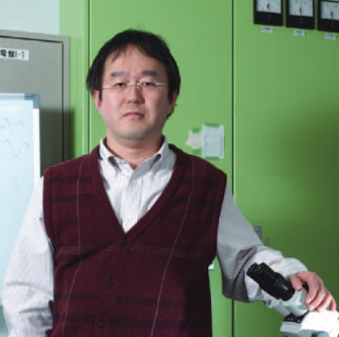
Director of Kobe Frontier Research Center
Tanaka Shukichi,Ph.D.Established in 1989 as the Kansai Branch (now Advanced ICT Research Institute) of the Communications Research Laboratory (now NICT), the Kobe Frontier Research Center has been newly established under the Advanced ICT Research Institute as a unit in the field of Kobe-based research laboratories.
Our five laboratories are engaged in research on frontier ICT technologies and new ICT device technologies that create novel materials, structures and functions that lead to outstanding ICT functions, and bio-ICT technologies that elucidate and utilize biological mechanisms with a history of billions of years.
The Kobe Frontier Research Center is creating Innovative ICT research that is not an extension of existing technologies.Advanced ICT Kobe Colloquium:Workshops and lectures held at Kobe Frontier Research Center
Kobe Frontier Research Center
Superconductive ICT Device Laboratory

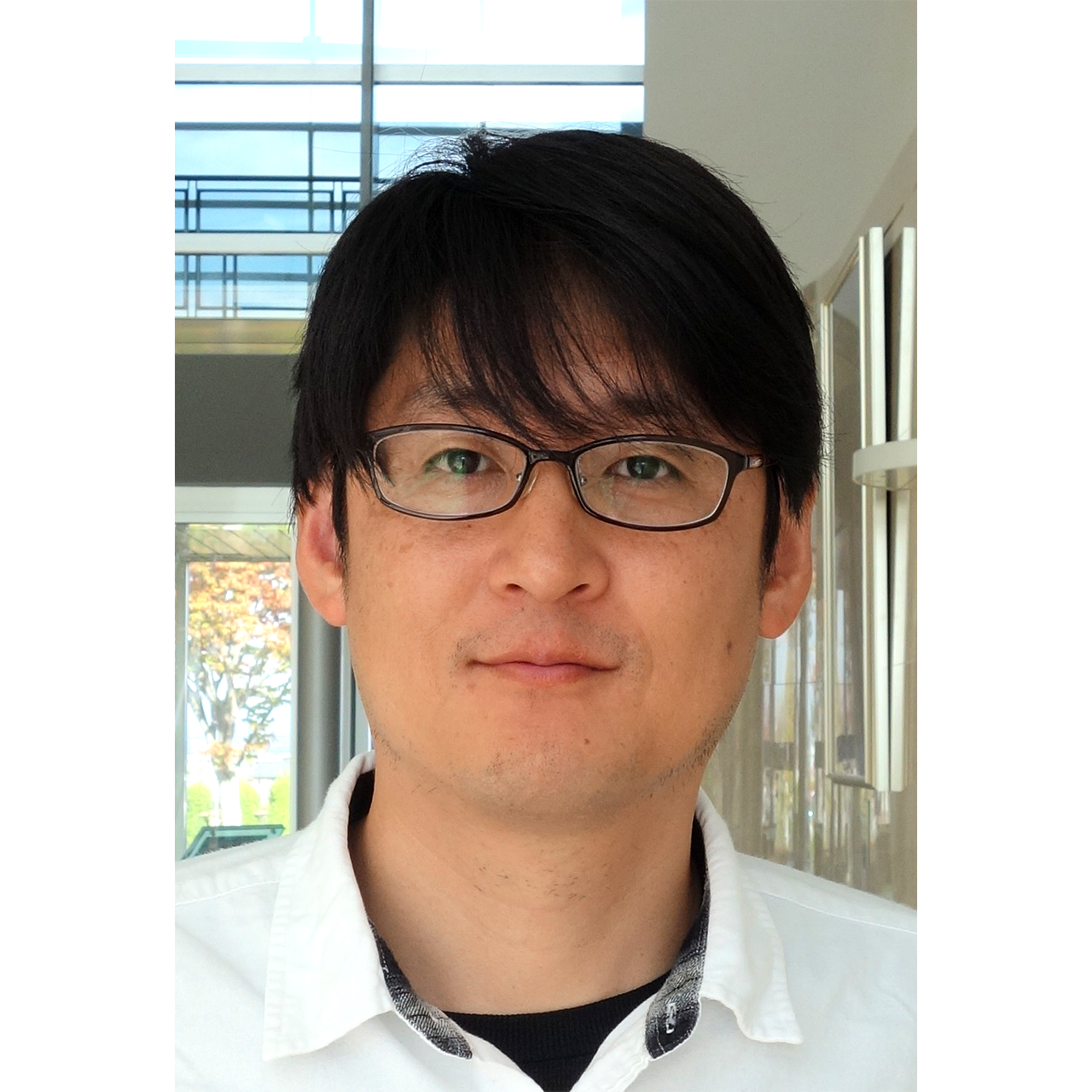
Director of Superconductive ICT Device Laboratory
Miki Shigehito,Ph.D.The Superconductive ICT Laboratory is engaged in R&D of ultimately sensitive photon d, integrated circuits with ultra-low power, and superconducting qubits to outperform classical computers, taking advantage of the unique properties of superconducting materials. We are developing superconducting devices using niobium nitride (NbN) and titanium nitride (TiN), which have higher superconducting transition temperatures than those generally used materials such as niobium (Nb) and aluminum (Al), enabling high temperature operation and the development of high-performance devices. The developed superconducting photon detector systems are already used in various advanced technologies such as quantum ICT technology, observation of living cells, and LIDAR technology, and our ultra-low-loss TiN thin film has been adopted as an electrode in the chip of a domestically first quantum computer. In the future, we will continue to develop new application fields for our superconducting device technology and promote research collaboration with a wide range of other fields in order to widely utilize the excellent performance of superconducting devices for the benefit of the world and contribute to the creation of innovation.
Kobe Frontier Research Center
Nano-scale Functional Assembly ICT Laboratory

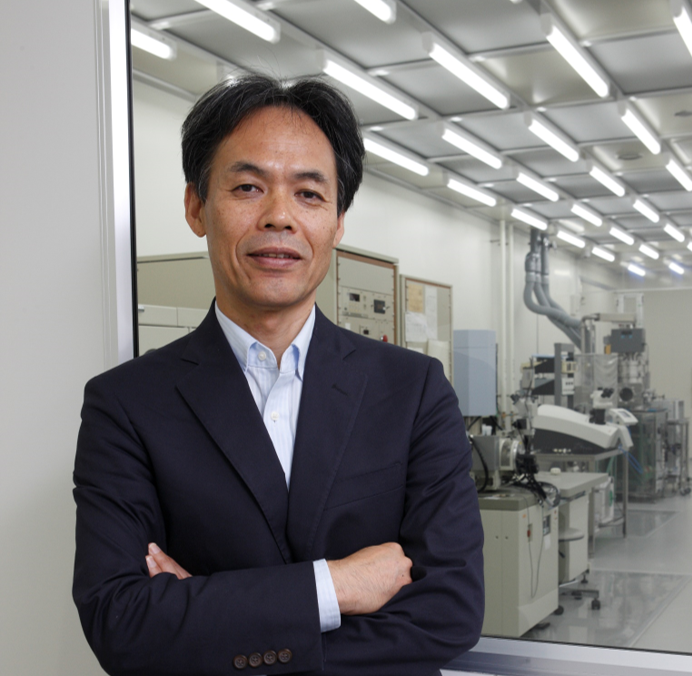
Director of Nano-scale Functional Assembly ICT Laboratory
Otomo Akira,Ph.D.In information and communication networks, which are the infrastructure of industry and society, high speed and large capacity are required at all scales from long-distance communication to short-distance optical interconnection. In order to increase the speed, it is necessary to use terahertz waves and light waves in wireless communication and to develop high-speed optical transmission / reception technology of over 200 Gbaud. In our laboratory, we aim to enhance the functionality and integration of light control devices by combining an organic material with excellent light control properties and nano-photonic structures using inorganic high index materials with high optical confinement functions. Also, we will research and develop basic technologies for controlling organic-inorganic interfaces and structures at the atomic and molecular levels in order to enhance the functionality of devices and develop new functions at the material level. Organic molecules exhibit large optical nonlinearity due to the resonance interaction between π electrons bound within a nanoscale single molecule and the electric field of light. Organic electro-optic (EO) polymers, which exhibit particularly large EO effects, are expected as new materials that realizes high speed and low power consumption of light control devices such as optical modulators and radio-light conversion devices that are indispensable for optical communication systems. On the other hand, silicon optical integrated circuits using mature semiconductor microfabrication technology are being put into practical use. Based on hybrid technology of organic EO polymer and semiconductor nanostructure, we are working on development of ultra-small optical modulators with ultra-high speed and low power consumption, light control devices such as optical phased arrays that integrate them, terahertz generators / detectors, etc
Kobe Frontier Research Center
Bio-ICT Laboratory
Cell Biology Project
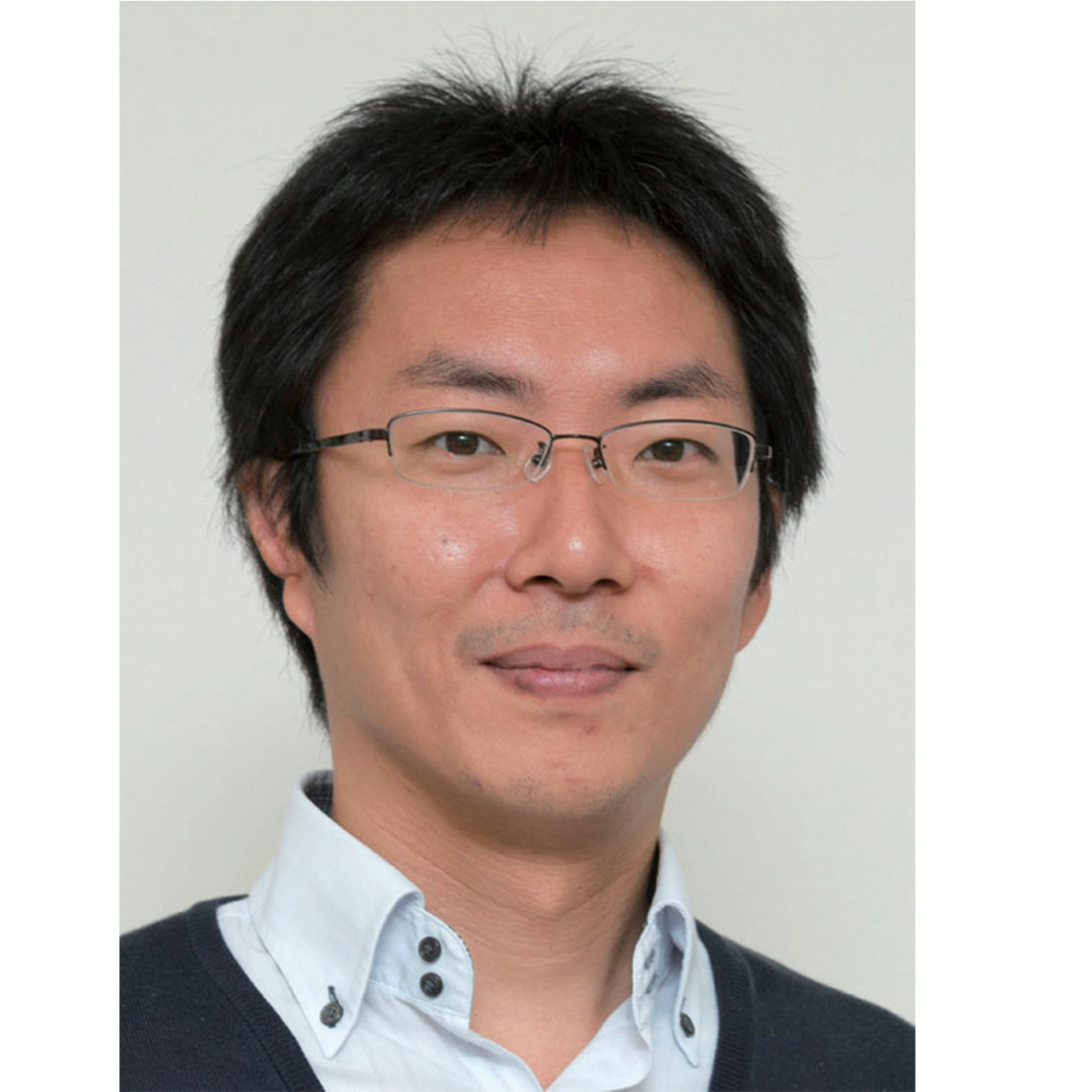
Director of Bio-ICT Laboratory
Kobayashi Shouhei,Ph.D.We are exploring a new ICT paradigm based on the information and communications of living cells by carrying out investigations in the following three areas.
〇Development of bio-imaging technology
We are developing fluorescent microscope technology that can visualize the behavior of target molecules in living cells at ultra-high resolution to monitor information flow inside cells. Fluorescent microscopy is one of the most essential technologies for utilization of cellular ICT.〇Construction of intracellular structures and control of cellular function
We are developing the technology to construct artificial structures in living cells that will allow us to control cellular function. Construction of functioning artificial organelles in cells will enable us to create various artificial cells that can act as sensors for specific substances, perform drugs screening, and generate various useful materials.〇Analysis and application of cellular information systems
The genetic information system in cells is an excellent product of biological evolution for 3.5 billion years. We are clarifying the regulatory principles and molecular mechanisms of the genetic information system in order to create new ICT based on the cellular systems.
Kobe Frontier Research Center
Bio-ICT Laboratory
Protein Biophysics Project
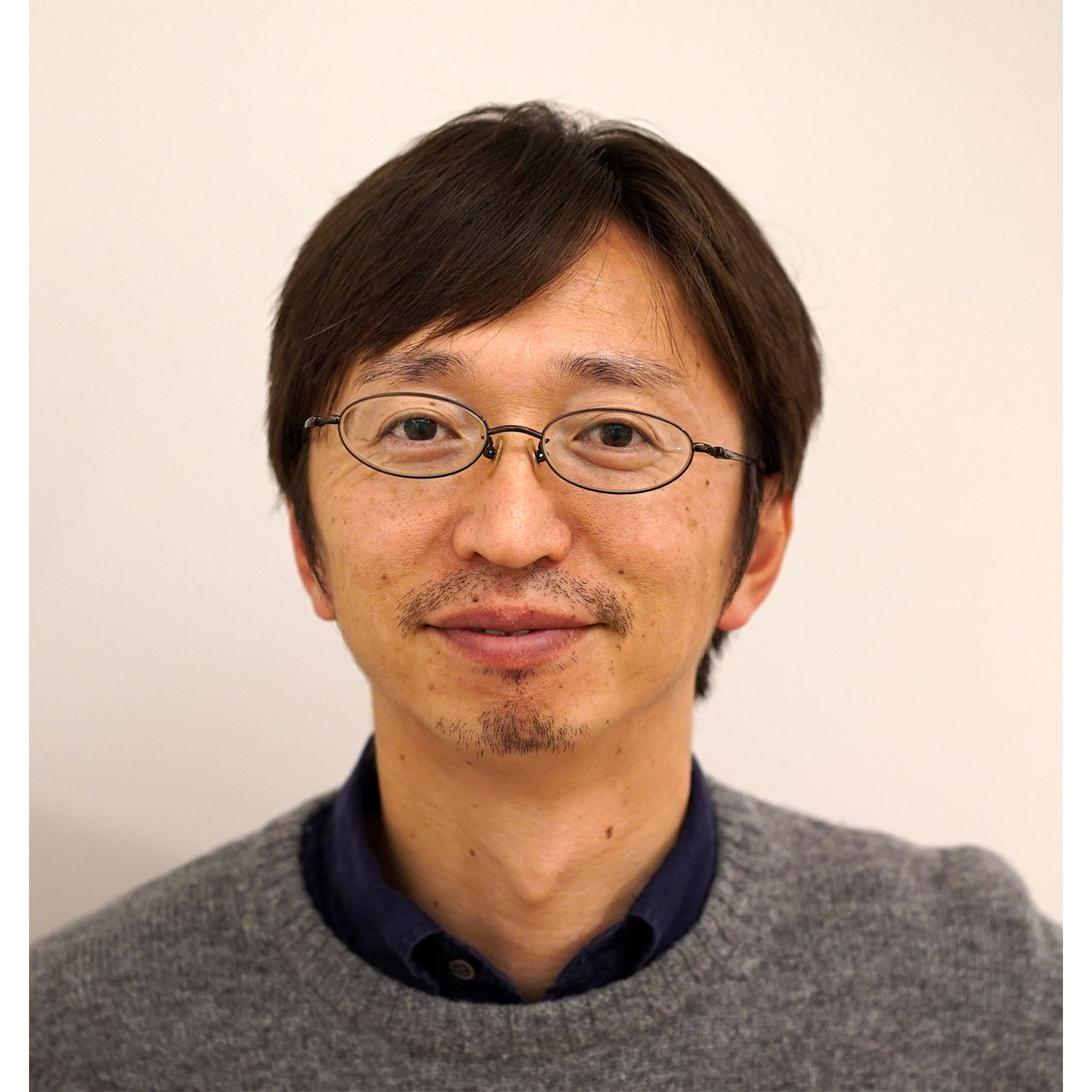
Research Manager
Furuta Kenya,Ph.D.The Protein Biophysics Project is conducting research and development activities that will lead to new concepts for information and communication technologies by learning from biological systems. Our research targets range from biomolecules up to the cellular network level. By measuring, analyzing, and controlling a wide range of biological materials, we are trying to understand and reproduce various biological functions. Our research activities include the following projects.
1.Reproduction of cellular and biomolecular sensing mechanisms: We are trying to reproduce the system for detecting information transmitted by chemical substances by combining the functions of living cells and machine learning techniques.
2.Research on biomolecular machines: We are analyzing the structure and functions of biomolecular machines by employing state-of-the-art technologies in order to understand how they work. We are also trying to understand the design concepts for biomolecular machines based on techniques for engineering biomolecules.
3.Research project on biomolecular systems: We are exploring the mechanisms underlying the formation of self-organized structures and their functions based on interactions among biomolecules.
Kobe Frontier Research Center
Neuro-ICT Laboratory
Neuro-network Evolution Project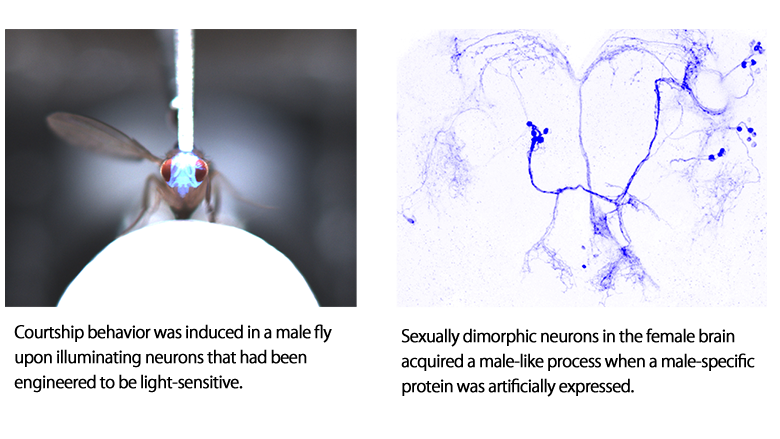
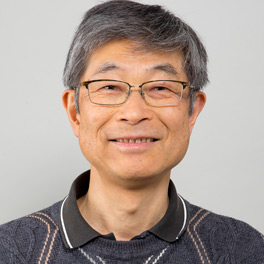
Director of Neuro-ICT Laboratory
Yamamoto Daisuke,Ph.D.-
This new project launched in April 2018, aiming to unveil hitherto unexplored neural mechanisms underlying instinctive behavior of the fruit fly Drosophila, an outstanding model organism in genetic studies: the discovery of novel principles for controlling behavior will potentially pave the way to the creation of a solid substrate for innovating future ICT technologies.
Organisms are robust enough to sustain life when exposed to threat of environmental stress, yet they show highly plastic and sophisticated behavioral acts for enjoying their life under peaceful conditions. How does the simple nervous system of an insect manage these apparently contradictory requirements and find a solution for adaptive behavior?
To this end, we attempt to untangle the entire neural circuit that orchestrates courtship, a behavior which is likely to be most rewarding for a fly, and to unravel the neuro-endocrine network that operates as the switch for survival vs. reproduction, representing the most challenging decision-making for a fly.
Kobe Frontier Research Center
Neuro-ICT Laboratory
Memory Neurobiology Project
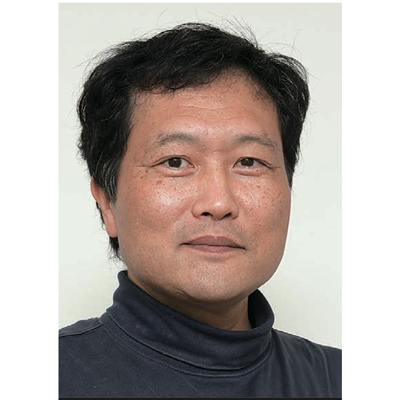
Kobe Frontier Research Center
Executive Researcher
(PI of memory neurobiology project)
Yoshihara Motojiro,Ph.D.The Memory Neurobiology Project is trying to establish basic mechanisms of memory using a fruit fly (Drosophila melanogaster) as a model animal, which allows us to perform genetic analysis at the single cell level. Although "memories" in computers are daily used devices, memory in our brain is not well understood because nobody has witnessed plastic processes when memories are formed. Our project involves real-time observation of memory formation on the "Feeding neuron", which commands feeding behavior of fruit flies, during Pavlovian conditioning. Through direct observation, we will study molecular and cellular mechanisms involved in memory formation. Understanding mechanisms of memory will allow us to design devices that mimic plasticity underlying memory formation. By connecting such devices, we are preparing to build circuits that may function for artificial intelligence in a similar way to that used in our brain.
Kobe Frontier Research Center
DUV ICT Device Laboratory

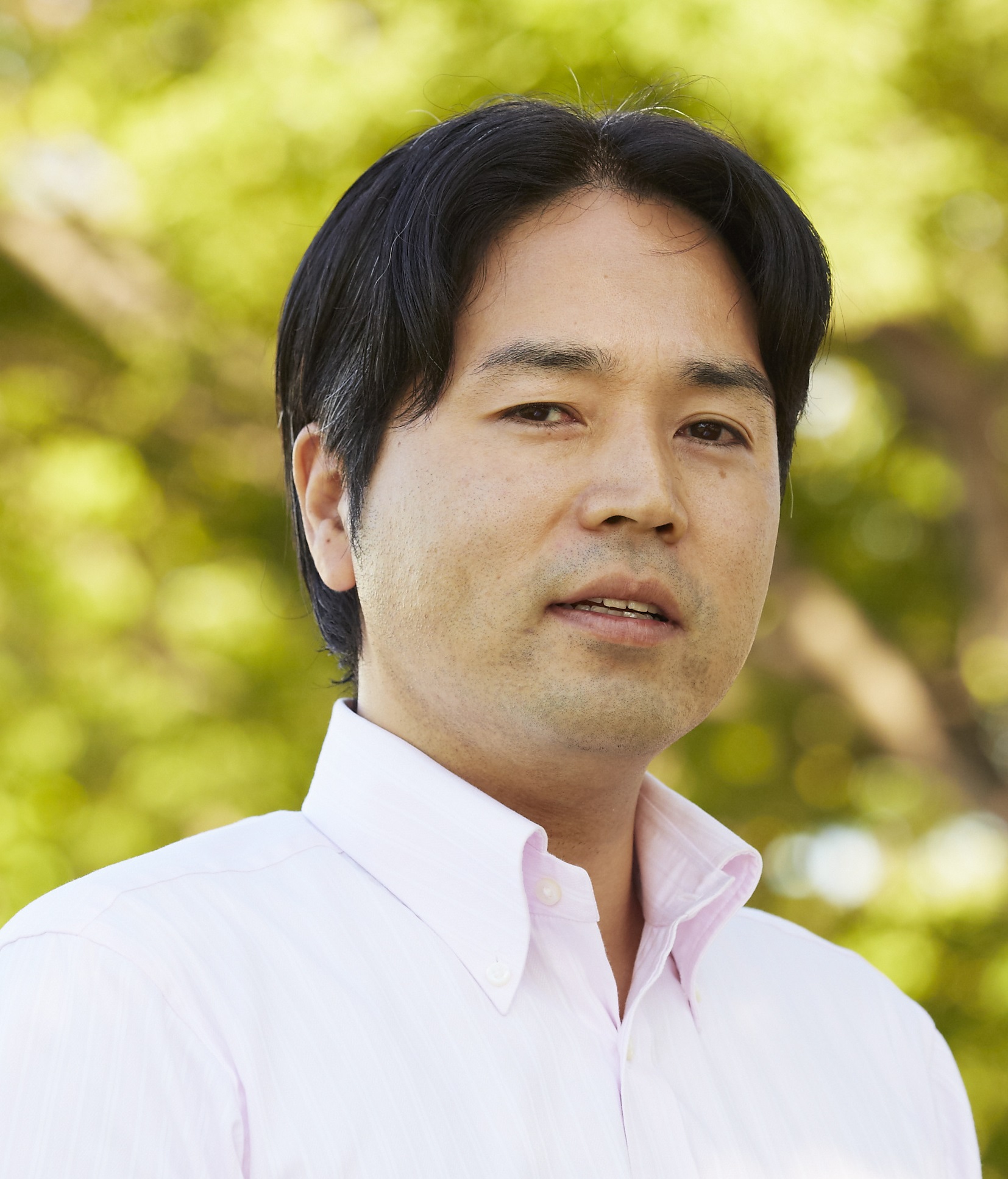
Director of DUV ICT Device Laboratory
Inoue Shinichiro,Ph.D.DUV ICT Device Laboratory is conducting R&D on deep-ultraviolet ICT devices with the aim of dramatically expanding the optical wavelength bands available for information and communications, as well as creating innovative optical ICT applications such as solar-blind optical communications that goes beyond the framework of existing visible and infrared optical communication technologies. Besides, we are also developing advanced technologies, including nanophotonic structure, semiconductor device, and practical technologies, to realize high-compact, environmental-friendly, and high-power deep-ultraviolet light-emitting diodes (DUV-LEDs), which can be used to create a safe, secure and sustainable society. It will also play a crucial role in the social development in the age of the New Normal with COVID-19. We have successfully demonstrated DUV-LEDs with light output power of over 520 mW (λ=265 nm), which has significantly updated the world record, and are working to further improve its performance. By taking up the challenge of breaking through the limitations of conventional DUV-LEDs, we anticipate that these advances will bring technological innovations in a wide range of fields, from information and communications to the environment, health and safety, and healthcare.
Koganei Frontier Research Center
Koganei Frontier Research Center
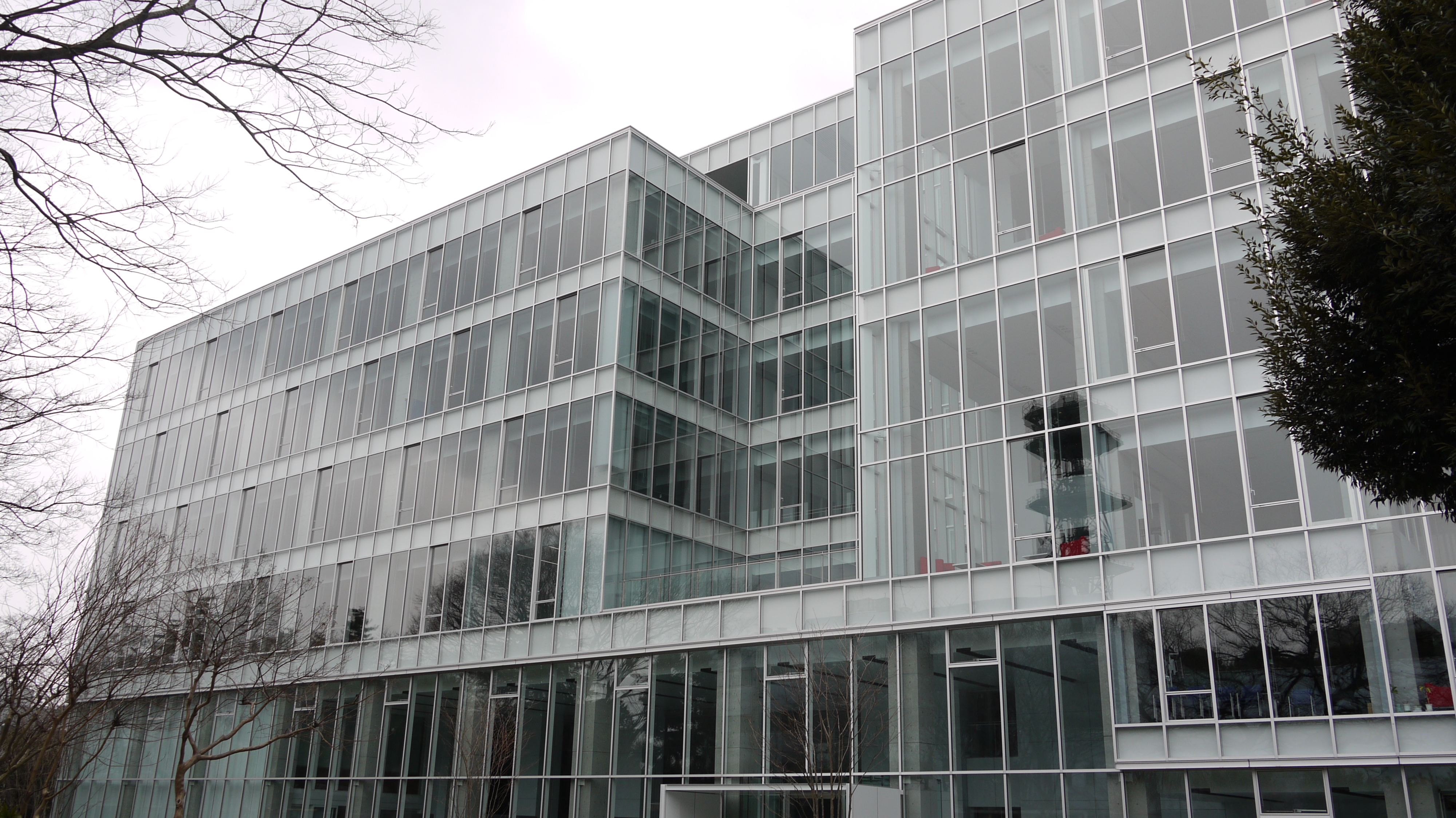
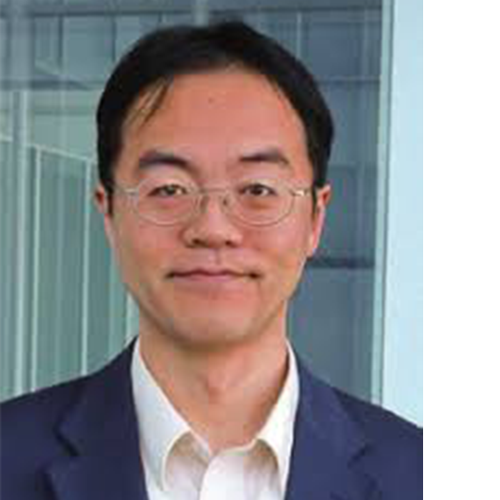
Director of Koganei Frontier Research Center
Kasamatsu Akifumi,Ph.D.NICT started the fifth mid-term plan from 2021 to 2025. Koganei Frontier Research Center was newly installed under Advanced ICT Research Institute at the headquarters in Koganei, Tokyo. Three laboratories in the research center work on the cutting-edge science and technology as “frontiers” in the ICT field. Quantum ICT Laboratory develops a secure network with quantum key distribution by using quantum behavior of photons, and conducts fundamental research on control and measurement technologies of photons and materials based on quantum mechanics. Terahertz ICT Device Laboratory studies new semiconductor devices available at the ultra-high frequency bands, and develops wireless communication systems with the devices for broad-band communications superior to the fifth generation. Green ICT Device Laboratory pursues new-function electronic devices with high-efficiency semiconductor materials derived from gallium oxide for decreasing environmental load. Koganei Frontier Research Center will proceed the research and development on important element technologies for breakthroughs in the future communications, and will suggest new ICTs for our society first in the world.
Koganei Frontier Research Center
Quantum ICT Laboratory

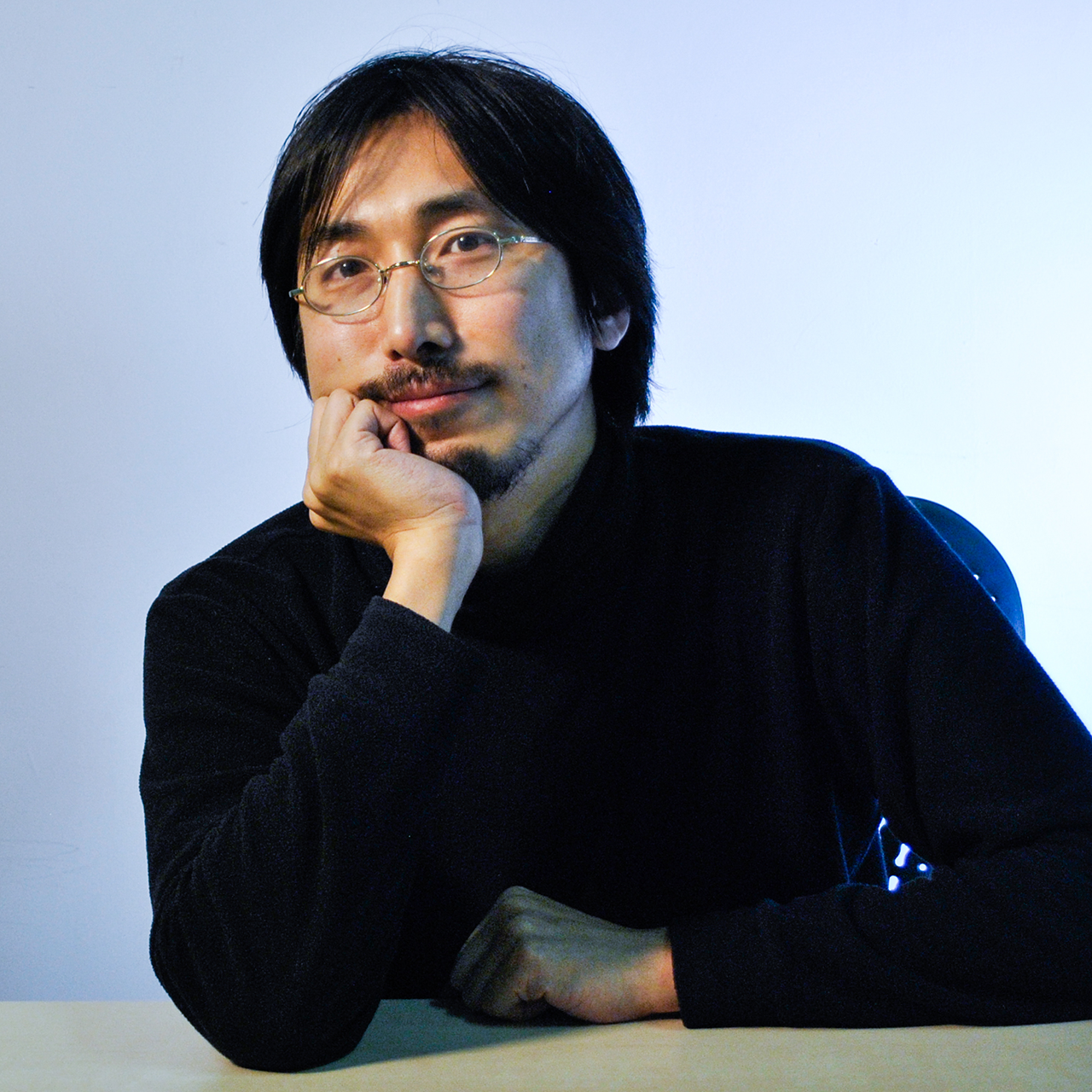
Director of Quantum ICT Laboratory
Kato Go,Ph.D.Our laboratory has two main R&D projects. One is the development of quantum photonic network technology, which includes quantum key distribution networks for realization of secure encryption in the future and free-space quantum optical communication enabling to choose the optimal balance between transmission efficiency and security for various applications. The other project involves quantum node technology and includes more fundamental research, such as investigation of quantum optical control techniques, quantum interfaces between photons and artificial atoms, and quantum metrology. These elements will eventually be integrated to develop novel functionalities in future communication network nodes. Our projects have a wide diversity, extending from new theoretical developments and proof-of-principle experiments to field trials using network testbeds. Thus, we aim to contribute to society through both fundamental science and industrial technology.
Koganei Frontier Research Center
Quantum ICT Laboratory
Macroscopic Quantum Physics Project
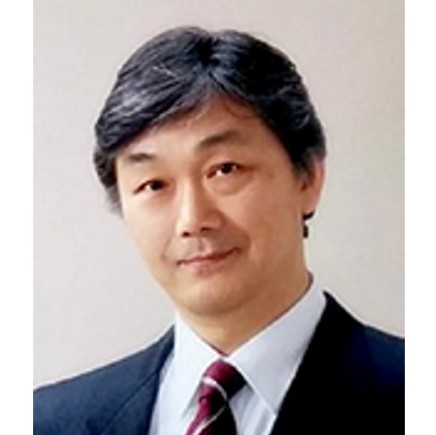
Principal Investigator, Semba Kouichi, Ph.D. (Institute for Photon Science and Technology, the University of Tokyo)
We have discovered qualitatively new states of a superconducting artificial atom dressed with virtual photons. We used a micro-fabricated superconducting harmonic oscillator and an artificial atom (quantum bit: qubit), which has electronic states that follow quantum mechanics like a natural atom. We carefully designed a superconducting persistent-current qubit interacting with an LC harmonic oscillator that has a large zero-point fluctuation current via a large shared Josephson inductance (Left). Then we used spectroscopy (Right) to identify a new ground state like the stable molecular state of photons and artificial atom.
Koganei Frontier Research Center
Terahertz ICT Device Laboratory
Terahertz Wave Electronics Project
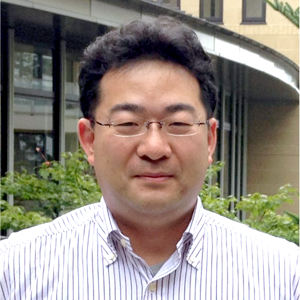 Director of Terahertz ICT Device Laboratory
Director of Terahertz ICT Device Laboratory
Watanabe Issei,Ph.D.With the aim of developing 100-Gbps wireless communication systems using terahertz waves, the project is involved in research on electronic devices suitable for terahertz frequencies and measurement technology to evaluate such terahertz devices. We are focusing on the development of high electron mobility transistors (HEMTs) composed of several semiconductor materials. These materials include indium phosphide (InP) that shows the highest operating frequency among recent technologies, gallium nitride (GaN) that has high resistivity to voltage, heating, and radiation, and silicon germanium (SiGe) that is easy to combine with commercial silicon technologies. We are also exploring some new materials for future terahertz electron devices, such as indium antimonide (InSb) and graphene among others. With regard to research on terahertz transceivers, an early prototype of a 300-GHz 100-Gbps transmitter has been created based on a silicon integrated circuit, and we are involved in ongoing research to achieve higher performance.
Koganei Frontier Research Center
Terahertz ICT Device Laboratory
Terahertz Wave Photonics Project
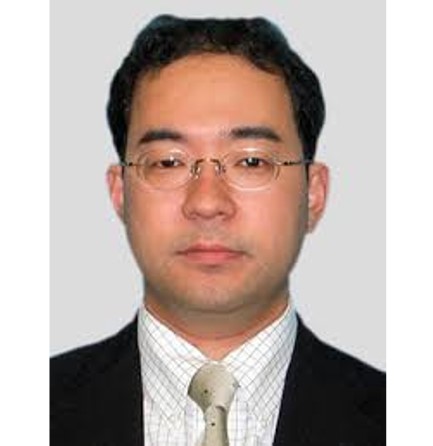 Research Manager
Research Manager
Sekine Norihiko,Ph.D.The terahertz wave photonics project has the aim of developing key device technologies, such as signal sources and detectors, which are expected to be employed in 100 Gbps-class wireless communication systems and high-precision measurement systems working in the terahertz frequency and (sub-)millimeter wavelength regions. In particular, we are focusing our R&D on narrow linewidth and highly stable light sources (and on terahertz wave generation with these devices), which can be used for both high-capacity wireless communications and wideband spectrum measurement. Through our R&D activities, we hope to contribute to the realization of terahertz technologies involved in processes such as:
- Handling terahertz wave correctly
(e.g. real-time processing of ultra-high-speed signals)- Controlling terahertz waves accurately
(e.g. advanced modulation for high-speed/high-capacity communication)- Measuring terahertz waves precisely
(e.g. high-precision broadband spectrum measurement up to the spurious band)
Koganei Frontier Research Center
Green ICT Device Laboratory

Chip fabricated with Ga2O3 transistors and diodes
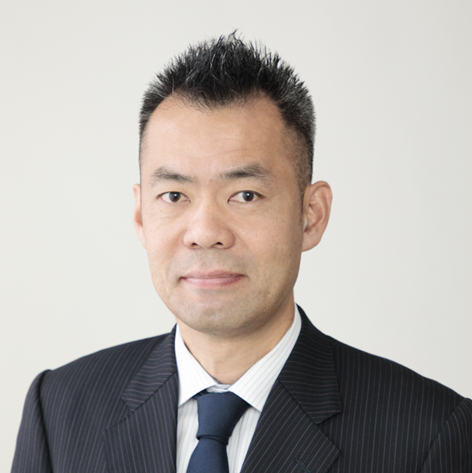
Director of Green ICT Device Laboratory
Higashiwaki Masataka,Ph.D.With the mission of realizing an energy-efficient society and promoting widespread utilization of environmentally friendly information and communication technologies (ICT), the Green ICT Device Laboratory is pioneering research and development (R&D) that targets electronic devices with new functionalities and unprecedented performance by exploiting material properties of novel oxide semiconductors.
We currently focus on R&D of transistors and diodes based on a new semiconductor material - gallium oxide (Ga2O3 ). With its superior material properties, Ga2O3 is expected to be used to develop innovative power switching devices that can achieve large-scale energy savings by considerably reducing energy loss during power conversion. Ga2O3 can also be applied to harsh-environment signal processing and/or wireless communication devices that can operate at extremely high temperatures and/or in high radiation settings. An industry/academia/government consortium has been established to accelerate R&D of these promising technologies, which is expected to culminate in the commercialization of Ga2O3 devices and the birth of a new semiconductor industry in the near future.
Center for Information and Neural Networks(CiNet)
Brain Networks and Communication Laboratory
Brain Function Analysis and Imaging Laboratory
Neural Information Engineering Laboratory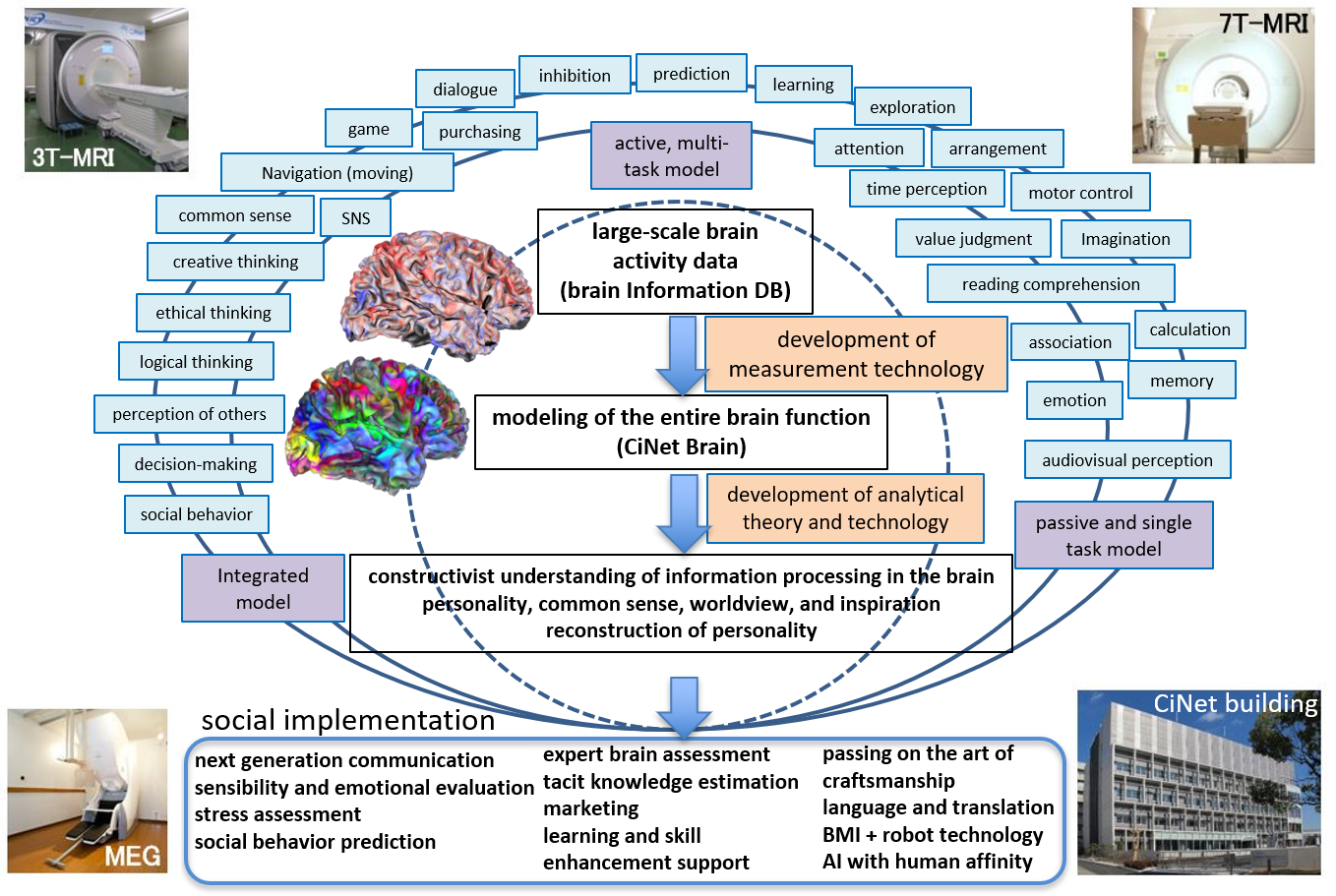
Introduction to CiNet’s research
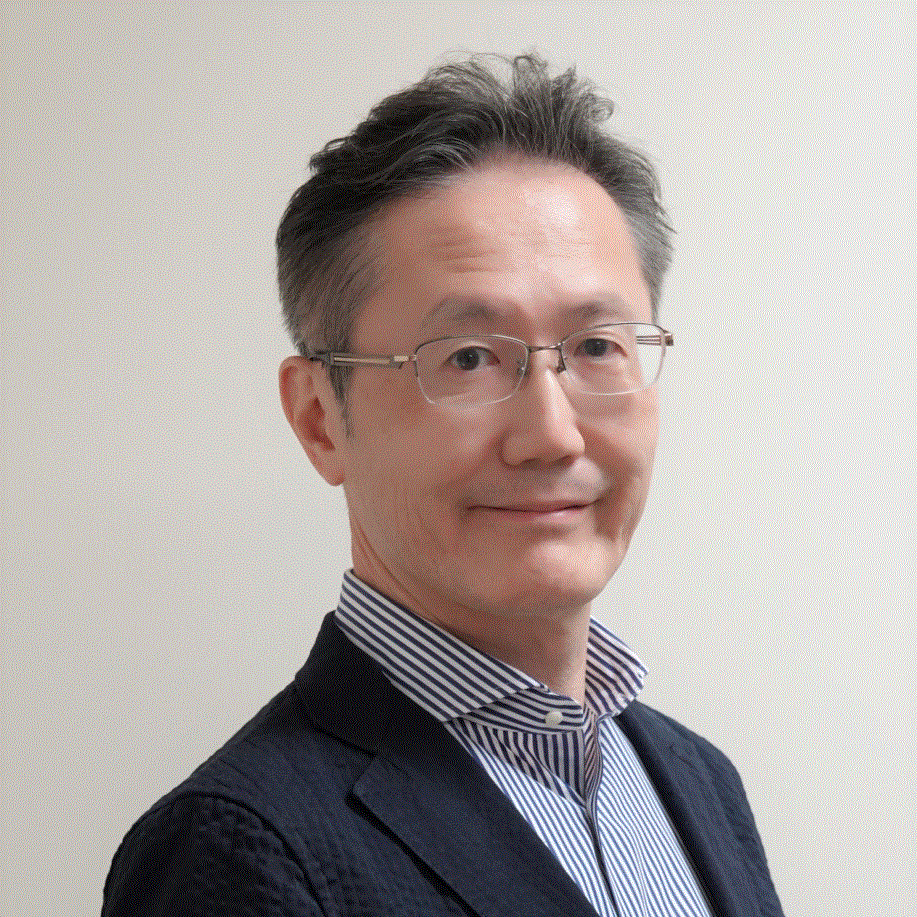
Director of CiNet
Kitazawa Shigeru,Ph.D.The Center for Information and Neural Networks (CiNet) is a neuroscience technology research institute based in Suita City, Osaka, Japan, and aims at creating new ICT that will enable ultimate communication and the fulfillment of human potential through the collaboration of three laboratories, the Brain Networks and Communication Laboratory, the Brain Function Analysis and Imaging Laboratory, and the Neural Information Engineering Laboratory.
For this aim, we measure brain activity during various tasks using the latest functional brain imaging technology, accumulate large-scale data on brain activity, and analyze it using machine learning technology. We believe that we will ultimately be able to reproduce how the brain understands, feels, judges, and acts upon a wide variety of input information by modeling the entire brain function. By utilizing this model, we aim to realize advanced ICT technologies such as next-generation communication, sensibility and emotion evaluation, social behavior prediction, and brain-machine interface.
The CiNet building was built in March 2013 on the Suita Campus of Osaka University, and is equipped with the latest brain function measurement machines such as 7T-MRI. In collaboration with Osaka University and many other universities, research institutes, and companies in Japan and abroad, the CiNet offers an interdisciplinary research opportunity for neuroscience, information science, bioengineering, and robotics and so on.
